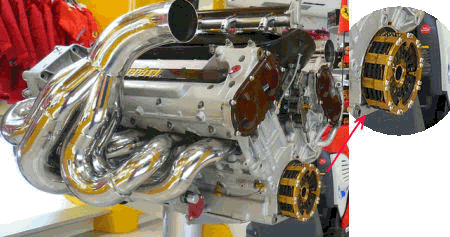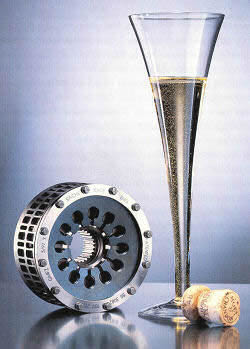As they prep to switch to the turbo V6 next year a fitting sendoff was necessary for the Renault RS27 after the Brazillian GP...
The removed the rev limiters and let 'em rip. Supposedly Red Bull hit 22,000 RPM
Red Bull:
Caterham:


BTW, fun facts on the Renault RS27:
The removed the rev limiters and let 'em rip. Supposedly Red Bull hit 22,000 RPM
Sebastian Vettel and Mark Webber helped Red Bull and Renault to send off their final V8 engine with one last blast.
Webber personally fired up the Renault RS27 in his chassis, glowed white hot as it screamed away at maximum revs with its limiter disabled.
Lotus and Caterham added to the cacophony of noise in the pit lane after the Brazilian Grand Prix as Formula One said goodbye to the V8 engine formula which has been in service since the 2006 season.
Webber personally fired up the Renault RS27 in his chassis, glowed white hot as it screamed away at maximum revs with its limiter disabled.
Lotus and Caterham added to the cacophony of noise in the pit lane after the Brazilian Grand Prix as Formula One said goodbye to the V8 engine formula which has been in service since the 2006 season.
Red Bull:
Caterham:


BTW, fun facts on the Renault RS27:
- 2.4 L V8 (2006 to 2013)
- 8 years of competition
- 59 wins – 40% of wins in the V8 era
- 65 pole positions
- 55 fastest laps
- 3665.5 points
- 5 Constructors’ world titles
- 5 Drivers’ world titles
- 750 bhp maximum power (2013 version, typical car installation, typical temp/pressure/humidity)
- 18,000 rpm maximum engine speed (2013 version)
- 95kg weight, FIA perimeter
- 1,271 engines built, 683 for track use, 588 for dyno use
- more than 2 000 000 km total
- more than 5 000 components per engine
- more than 7 600 000 parts used
- 21,800 pistons used
- 43,200 inlet valves used
- 45,900 exhaust valves used
- 43,800 connecting-rod bolts fitted
- 22,000 spark plugs used
- 10,600 oil filters used
Jean-Michel Jalinier, Renault Sport F1 President and Managing Director: “The V8 era has been a particularly successful one for Renault, and one that stands up to the exceptionally high standards we set with the V10 in the 90s. We can be very proud of the ‘hit’ rate of wins and poles, but equally of the progress we have made, particularly under the frozen engine regulations. What is equally satisfying is the relationships we have built up with all of our teams. We have worked hard on installation to provide the most driveable engine, sacrificing outright power to enable greater integration and other benefits such as energy recovery and cooling to make the overall speed of the car quicker. To have won with four different teams and six different drivers shows the relationships have flourished.”







Comment